Friederike Klan
How can voting mechanisms improve the robustness and generalizability of toponym disambiguation?
Sep 17, 2022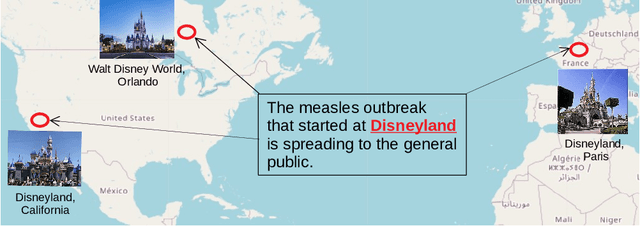
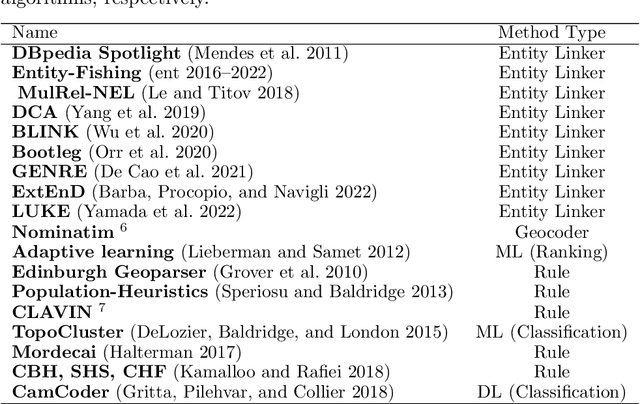
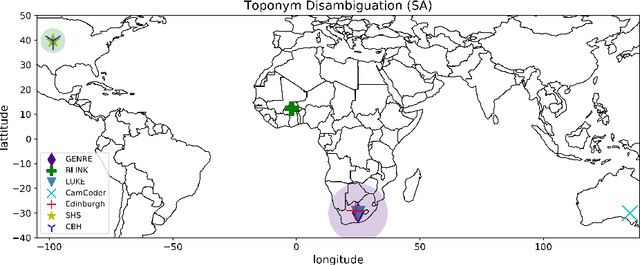
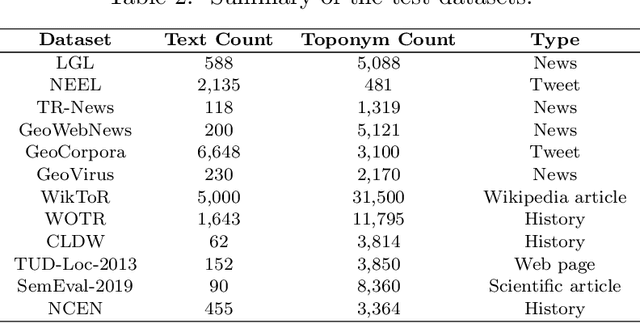
Abstract:A vast amount of geographic information exists in natural language texts, such as tweets and news. Extracting geographic information from texts is called Geoparsing, which includes two subtasks: toponym recognition and toponym disambiguation, i.e., to identify the geospatial representations of toponyms. This paper focuses on toponym disambiguation, which is usually approached by toponym resolution and entity linking. Recently, many novel approaches have been proposed, especially deep learning-based approaches, such as CamCoder, GENRE, and BLINK. In this paper, a spatial clustering-based voting approach that combines several individual approaches is proposed to improve SOTA performance in terms of robustness and generalizability. Experiments are conducted to compare a voting ensemble with 20 latest and commonly-used approaches based on 12 public datasets, including several highly ambiguous and challenging datasets (e.g., WikToR and CLDW). The datasets are of six types: tweets, historical documents, news, web pages, scientific articles, and Wikipedia articles, containing in total 98,300 places across the world. The results show that the voting ensemble performs the best on all the datasets, achieving an average Accuracy@161km of 0.86, proving the generalizability and robustness of the voting approach. Also, the voting ensemble drastically improves the performance of resolving fine-grained places, i.e., POIs, natural features, and traffic ways.
Need for Design Patterns: Interoperability Issues and Modelling Challenges for Observational Data
Aug 26, 2022

Abstract:Interoperability issues concerning observational data have gained attention in recent times. Automated data integration is important when it comes to the scientific analysis of observational data from different sources. However, it is hampered by various data interoperability issues. We focus exclusively on semantic interoperability issues for observational characteristics. We propose a use-case-driven approach to identify general classes of interoperability issues. In this paper, this is exemplarily done for the use-case of citizen science fireball observations. We derive key concepts for the identified interoperability issues that are generalizable to observational data in other fields of science. These key concepts contain several modeling challenges, and we broadly describe each modeling challenges associated with its interoperability issue. We believe, that addressing these challenges with a set of ontology design patterns will be an effective means for unified semantic modeling, paving the way for a unified approach for resolving interoperability issues in observational data. We demonstrate this with one design pattern, highlighting the importance and need for ontology design patterns for observational data, and leave the remaining patterns to future work. Our paper thus describes interoperability issues along with modeling challenges as a starting point for developing a set of extensible and reusable design patterns.
Location reference recognition from texts: A survey and comparison
Jul 04, 2022
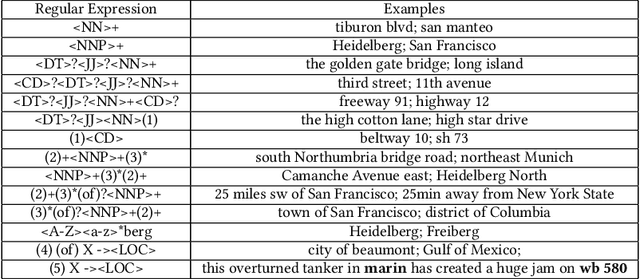
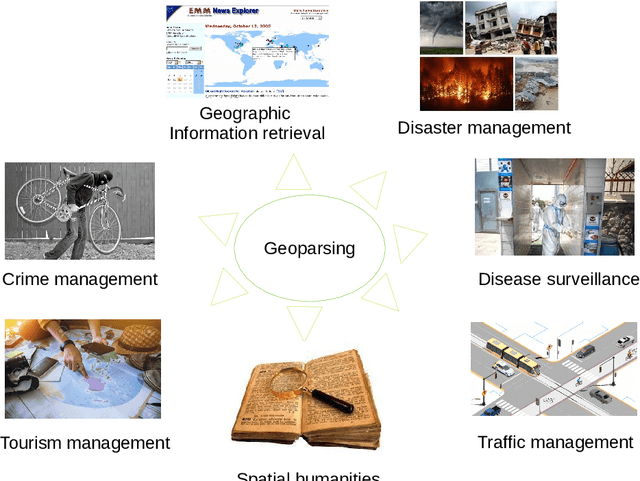

Abstract:A vast amount of location information exists in unstructured texts, such as social media posts, news stories, scientific articles, web pages, travel blogs, and historical archives. Geoparsing refers to the process of recognizing location references from texts and identifying their geospatial representations. While geoparsing can benefit many domains, a summary of the specific applications is still missing. Further, there lacks a comprehensive review and comparison of existing approaches for location reference recognition, which is the first and a core step of geoparsing. To fill these research gaps, this review first summarizes seven typical application domains of geoparsing: geographic information retrieval, disaster management, disease surveillance, traffic management, spatial humanities, tourism management, and crime management. We then review existing approaches for location reference recognition by categorizing these approaches into four groups based on their underlying functional principle: rule-based, gazetteer matching-based, statistical learning-based, and hybrid approaches. Next, we thoroughly evaluate the correctness and computational efficiency of the 27 most widely used approaches for location reference recognition based on 26 public datasets with different types of texts (e.g., social media posts and news stories) containing 39,736 location references across the world. Results from this thorough evaluation can help inform future methodological developments for location reference recognition, and can help guide the selection of proper approaches based on application needs.
 Add to Chrome
Add to Chrome Add to Firefox
Add to Firefox Add to Edge
Add to Edge